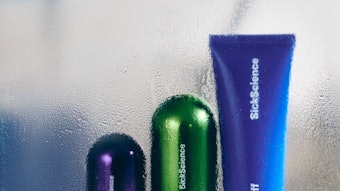The lingering question for ethical naturals is: can sustainability be accomplished when economies falter? And how do companies measure sustainability and ethics in the first place?
During her presentation at the 7th Centifolia International Congress on Perfumery and Natural Materials in Grasse, France, Mintel analyst Nica Lewis acknowledged that eco-friendly beauty products remain a small subset of the whole, though there is significant growth potential. “We need to show consumers that luxury can be ethical,” she said.
“I believe sustainability equals protection,” Lewis added, defining the term as both protection of humans from the damaged environment and defending the planet from human activity. And while there are legitimate drivers behind this growing trend, there is a dangerous downside: “totophobia.”
Addressing Consumer Concerns with Ingredients
Totophobia, or the fear of everything out there, is a contemporary phenomenon that has manifested itself as a risk-averse society. “There are a lot of scares that are appearing in newspapers and online that are fueling this,” said Lewis. These stories—founded or not—generate societal anxieties about global warming, pollution, genetically modified foods, allergens and, most worrying for fragrance suppliers, synthetic materials. “We have the mass of consumers who are scared,” Lewis said. “As an industry, we need to reassure them and communicate clearly the benefits [and safety] of the products we produce.”
Lewis presented Mintel data showing the sharp rise in products offering UV protection across categories from cosmetics to hair care. Meanwhile, other products (predominantly skin care) now feature claims about protecting consumers from the elements—pollution, tobacco smoke, environmental aggressors, “urban damage,” “harsh elements” and even cell phone signals. In short, said Lewis, beauty products now do more than beautify; they shield one from harmful elements.
In tandem with this development, “free from” products are on the rise, particularly as the perception of synthetic materials in the U.S., and Europe suffers. In addition, genetically modified organism-free and fragrance-free claims are on the rise. The latter is of particular interest in Asia, as the sensitive skin movement has focused on potential irritants. The result: increasing fragrance-free launches. According to Mintel numbers cited by Lewis, Europe witnessed nearly 900 fragrance-free product launches between January 2007 and June 2008. In the same period, the U.S. and Asian markets each saw the launch of approximately 700. Meanwhile, launches for products claiming to be eco-friendly during the period totaled just above 900. While many of these eco claims were related to the absence of chlorofluorocarbons, manufacturing processes also played a part. “We’re seeing more biodegradable formulas,” Lewis added. Finally, companies are boosting their green/ethical perception by promoting wildlife and marine conservation in areas in which materials are sourced.
Provenance of Ingredients
“Locavores”—those who consume products produced locally—are a small but growing factor, Lewis noted. Though the focus is largely on locally grown produce, the concept is slowly spreading to beauty. “The idea is that if you consume things locally, you’re cutting down on carbon emissions and supporting the local economy,” she said. “It’s linked to the green movement, the need for authenticity and [connection] with the earth, and, at the same time, the need for traceability and trust.” This final point perhaps resonates most strongly for the beauty industry. As Lewis pointed out, many U.K. supermarkets feature images of the farmers who grow featured produce. In this way, she said, “We build trust. We know the source.
“The more that brands provide links to and proof of the provenance of their ingredients, the stronger their competitive positioning will be,” Lewis continued. “We’ve already seen a lot of this over the last several years in the beauty business. While this used to be a way of connecting [consumers] to an exotic place, because of locavores, it’s also about connecting to somewhere familiar. In general, consumers are warming to brands whose ingredients reflect the cultural, social and economic identity of their local region.
“Brands that demonstrate integrity and transparency in their concept, ingredients, production and packaging are the ones that are going to thrive.”










